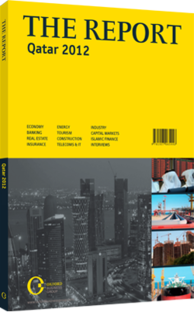OBG talks to Abdul Aziz Mohammed Al Noaimi, Chairman, Civil Aviation Authority

Interview: Abdul Aziz Mohammed Al Noaimi
In your opinion, how will the New Port Project (NPP) contribute to the growth of the private sector and creation of jobs in Qatar?
ABDUL AZIZ MOHAMMED AL NOAIMI: The NPP, which has an overall budget of QR27bn ($7.41bn) and covers an area of 26.5 sq km, is ultimately one of the most important projects currently under way in Qatar. This is due to the increase in demand for construction materials arising from projects related to the 2022 FIFA World Cup, along with helping achieve the goals and objectives of Qatar Vision 2030. The current Doha Port has almost reached full capacity, while the existing import system is highly inefficient and very costly.
The NPP aims to alleviate the pressure and congestion at the current Doha port and cater to the needs of the country, while at the same time working towards Qatar’s longer-term goal of becoming a centre of transportation in the region. The NPP’s impact on the economy will extend far beyond transport; it will spur growth in both the construction and infrastructure sectors, allowing for an easier and more cost-effective flow of construction materials into the state.
What is being done to ensure all Qatar’s ports are operating in line with international standards when it comes to security and technology?
AL NOAIMI: There is now an assigned committee to oversee the legislation that will ensure that Qatar’s ports comply with internationally recognised standards in terms of security and technology. We will also distinguish commercial ports from industrial ports as the requirements for security and technology differ between the two. By assigning two different respective committees to oversee commercial ports and industrial ports separately, we will be able to have far more targeted rules and regulations that are more specific and relevant for both, in turn increasing efficiencies and promoting a streamlined operating process. In terms of technology, we are being careful to make sure the latest technology installed fits our requirements. We need to ensure maximum optimised systems for each port. International regulations have changed recently to accommodate new advances, which are resulting in new larger vessels. We too are ensuring Qatar’s ports can anticipate future demand and development.
How do you envisage cargo handling developing in the future and what synergies with maritime and air freight can be explored?
AL NOAIMI: The NPP and the New Doha International Airport (NDIA) will be approximately 20 km away from each other, and we plan to link the two by motorways as well as a railway network. This integrated system will allow for the free flow of goods from air to sea and vice versa, and will be very accessible and convenient. The motorway and rail network will be connected to the rest of the GCC, not only to serve Qatar’s needs, but also to cater to the transportation needs of the region.
With the forthcoming NDIA, what strategies are being developed for expanding aircraft maintenance, repair and overhaul (MRO) services?
AL NOAIMI: In the master planning of the new airport, we have ensured that enough space has been allocated to allow for the expansion of aircraft maintenance facilities. Currently, with the opening of the NDIA, initial operations will include one maintenance hangar that incorporates the latest available technology and allows eight Code E or F aircraft to be parked at the same time – three in heavy maintenance bays and five in light maintenance bays. This hangar was built for the main operator, Qatar Airways, and will be serviced by its personnel. Moreover, there is the possibility of building a second hangar between the airport’s two runways and space has also been set aside to build a third and fourth hangar if required. In my opinion, Qatar is certainly equipped to become a possible centre for MRO services.
You have reached the limit of premium articles you can view for free.
Choose from the options below to purchase print or digital editions of our Reports. You can also purchase a website subscription giving you unlimited access to all of our Reports online for 12 months.
If you have already purchased this Report or have a website subscription, please login to continue.

